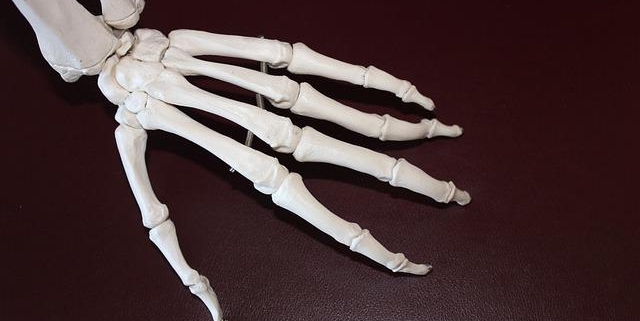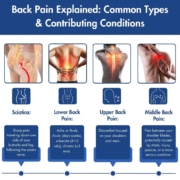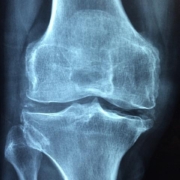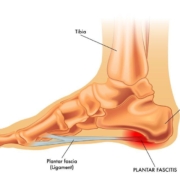5 Essential Tips for Balancing Arthritis and Exercise
Living with arthritis can often feel like a delicate balancing act, where the desire to stay active clashes with the challenges posed by joint pain and stiffness. Though, embracing exercise is crucial for maintaining mobility and enhancing overall well-being. In this listicle, we present 5 essential tips for balancing arthritis and exercise, designed to empower you on your journey toward a healthier lifestyle. From understanding the types of exercises that work best for your body to learning how to listen to your joints, these practical insights will help you navigate your fitness routine with confidence. Whether you’re a seasoned athlete or just starting out, you’ll discover valuable strategies to keep moving while respecting your body’s limits. Join us as we explore how to harmonize your passion for movement with the realities of arthritis.
1) Start Slow and Steady: When incorporating exercise into your routine, begin with low-impact activities that are gentle on your joints. Walking, swimming, or cycling are excellent choices that can definitely help build strength and adaptability without causing undue stress
When embarking on your fitness journey, it’s crucial to prioritize a gradual approach. Engaging in low-impact activities allows your body to adapt without overwhelming your joints. Walking is a fantastic option; it can be done almost anywhere and requires no special equipment. Swimming not only provides a full-body workout but also offers buoyancy that alleviates stress on your joints. Cycling, whether on a stationary bike or outdoors, is another gentle way to boost your cardiovascular health while strengthening your legs.
As you ease into your routine, consider setting small, achievable goals to keep your motivation high.Here are some simple activities to incorporate into your week:
- 10-15 minute walks around your neighborhood
- 30-minute swimming sessions at a local pool
- Short cycling trips on flat terrain
By starting slow, you create a solid foundation for your fitness journey, allowing for gradual increases in intensity and duration as your body becomes stronger and more resilient.
2) Listen to Your Body: Pay attention to how your body responds to different exercises. If you experience pain or discomfort, it’s crucial to stop and reassess. Finding the right balance between movement and rest will help you avoid flare-ups and maintain a consistent routine
Understanding your body’s signals is paramount when navigating exercise with arthritis. Each individual’s experience with arthritis is unique, and what works for one person may not work for another. listening to your body means being attuned to its cues—whether that’s a slight twinge during a stretch or a more pronounced ache after a workout. When you notice discomfort, it’s essential to pause and evaluate. Ask yourself if the pain is a sign of overexertion or simply a part of your body adjusting to new movements. Keeping a journal of your workouts and how you feel afterward can provide valuable insights over time.
Finding the right equilibrium between activity and rest is crucial for maintaining a enduring exercise routine. Consider adopting the following strategies to help you tune in to your body’s needs:
- Warm-Up and Cool Down: Always include these in your routine to prepare your muscles and joints.
- Modify Exercises: Don’t hesitate to adjust movements to suit your comfort level.
- Scheduled Rest Days: Incorporate regular rest days to allow your body to recover.
- Hydration: Stay hydrated to support joint function and overall health.
To further assist in balancing your exercise routine, consider using a simple table to track your activities and responses:
| exercise | Duration | Body Response |
|---|---|---|
| Walking | 30 mins | Minimal discomfort |
| Yoga | 45 mins | Stiffness in hips |
| Strength Training | 20 mins | slight soreness |
This approach not only helps you identify patterns but also empowers you to make informed decisions about your exercise regimen. By prioritizing your body’s feedback,you can cultivate a more enjoyable and effective fitness journey.
3) Prioritize Flexibility and Strength Training: incorporating stretching and strength exercises into your regimen can improve joint mobility and support the muscles around your joints. Yoga and Pilates are fantastic options that promote flexibility while being mindful of your body’s limitations
Incorporating flexibility and strength training into your exercise routine can substantially enhance your overall joint health. Stretching exercises not only improve your range of motion but also reduce stiffness, making daily activities more manageable. Consider integrating the following practices into your regimen:
- Dynamic Stretching: Engage in gentle movements that warm up your joints and muscles.
- Static Stretching: Hold stretches for 15-30 seconds to improve flexibility.
- Strength Training: Focus on low-impact exercises that build muscle around your joints, providing better support.
Yoga and Pilates stand out as exceptional choices for enhancing flexibility while being conscious of your body’s limits. these practices emphasize controlled movements, breathing techniques, and body awareness, allowing you to tailor your workout to your comfort level. Here’s a simple comparison of the two:
| Feature | Yoga | Pilates |
|---|---|---|
| Focus | Mind-body connection | Core strength and stability |
| Flexibility | enhances overall flexibility | Improves flexibility with a focus on core |
| Intensity | Varies from gentle to vigorous | Generally more focused on controlled movements |
By dedicating time to these activities, you can cultivate a more resilient body that not only withstands the challenges of arthritis but also thrives through movement. Remember to listen to your body and adjust your practice as needed, ensuring that your journey towards flexibility and strength remains safe and enjoyable.
4) Set realistic Goals: Establish achievable fitness goals that take your arthritis into account. Whether it’s walking for 10 minutes a day or completing a gentle yoga class, setting small, attainable objectives will keep you motivated and prevent frustration
Creating fitness goals that align with your current abilities and limitations is essential for maintaining motivation and overall well-being. Start by assessing your current fitness level and understanding how arthritis affects your body.Break down your larger fitness aspirations into smaller, more manageable tasks. Such as, if your ultimate goal is to improve your strength, consider beginning with a simple routine that includes:
- walking for 10 minutes each day
- Practicing gentle stretching exercises
- participating in a low-impact fitness class once a week
As you progress, celebrate each small victory, as these achievements will help build your confidence and encourage you to keep going. To further refine your goals, consider creating a simple table to track your accomplishments and set new ones:
| Week | Goal | Achievement |
|---|---|---|
| 1 | Walk 10 minutes | ✔️ |
| 2 | stretch daily | ✔️ |
| 3 | Attend yoga class | ✔️ |
by focusing on achievable goals, you’ll create a sustainable exercise routine that respects your body’s needs while also fostering a sense of accomplishment. Remember, the journey to better fitness is a marathon, not a sprint, so take your time and enjoy the process!
5) Consult a Professional: Before starting any exercise program, consider speaking with a physical therapist or a certified trainer who has experience working with individuals with arthritis. They can help design a personalized exercise plan that caters to your specific needs and capabilities
Consulting a professional can be a game-changer when it comes to managing arthritis while staying active. A physical therapist or certified trainer brings a wealth of knowledge and experience, specifically tailored to individuals dealing with arthritis. They can assess your current physical condition, understand your limitations, and help you set realistic goals. This personalized approach not only ensures that you’re exercising safely but also maximizes the benefits of your workout routine.
When meeting with a professional, consider discussing the following aspects to create a well-rounded exercise plan:
- Current Pain Levels: Understanding your pain threshold can help in selecting appropriate exercises.
- Range of Motion: Knowing your limits will guide your trainer in developing a suitable regimen.
- Preferred Activities: Incorporating exercises you enjoy can enhance motivation and adherence.
- Frequency and Duration: Establishing a realistic schedule that fits your lifestyle is crucial.
To illustrate how a professional can tailor a plan,here’s a simple example table of potential exercise types and their benefits:
| exercise Type | Benefits |
|---|---|
| Walking | Improves cardiovascular health and boosts mood. |
| Swimming | Low-impact, reduces joint stress while building strength. |
| Yoga | Enhances flexibility and promotes relaxation. |
| Strength Training | Builds muscle to support joints and improve overall function. |
Insights and Conclusions
As we wrap up our exploration of balancing arthritis and exercise, remember that your journey is uniquely yours. Each tip serves as a stepping stone towards a more active and fulfilling life,allowing you to embrace movement while respecting your body’s limitations. Whether it’s finding the right activities, listening to your body, or incorporating rest into your routine, these strategies can empower you to take charge of your health.Always consult with your healthcare provider to tailor these tips to your individual needs,ensuring a safe and enjoyable experience. With patience and persistence, you can cultivate a harmonious relationship between your body and exercise, discovering new strengths along the way. Here’s to your health and happiness—may your path be filled with movement, joy, and resilience!










Leave a Reply
Want to join the discussion?Feel free to contribute!